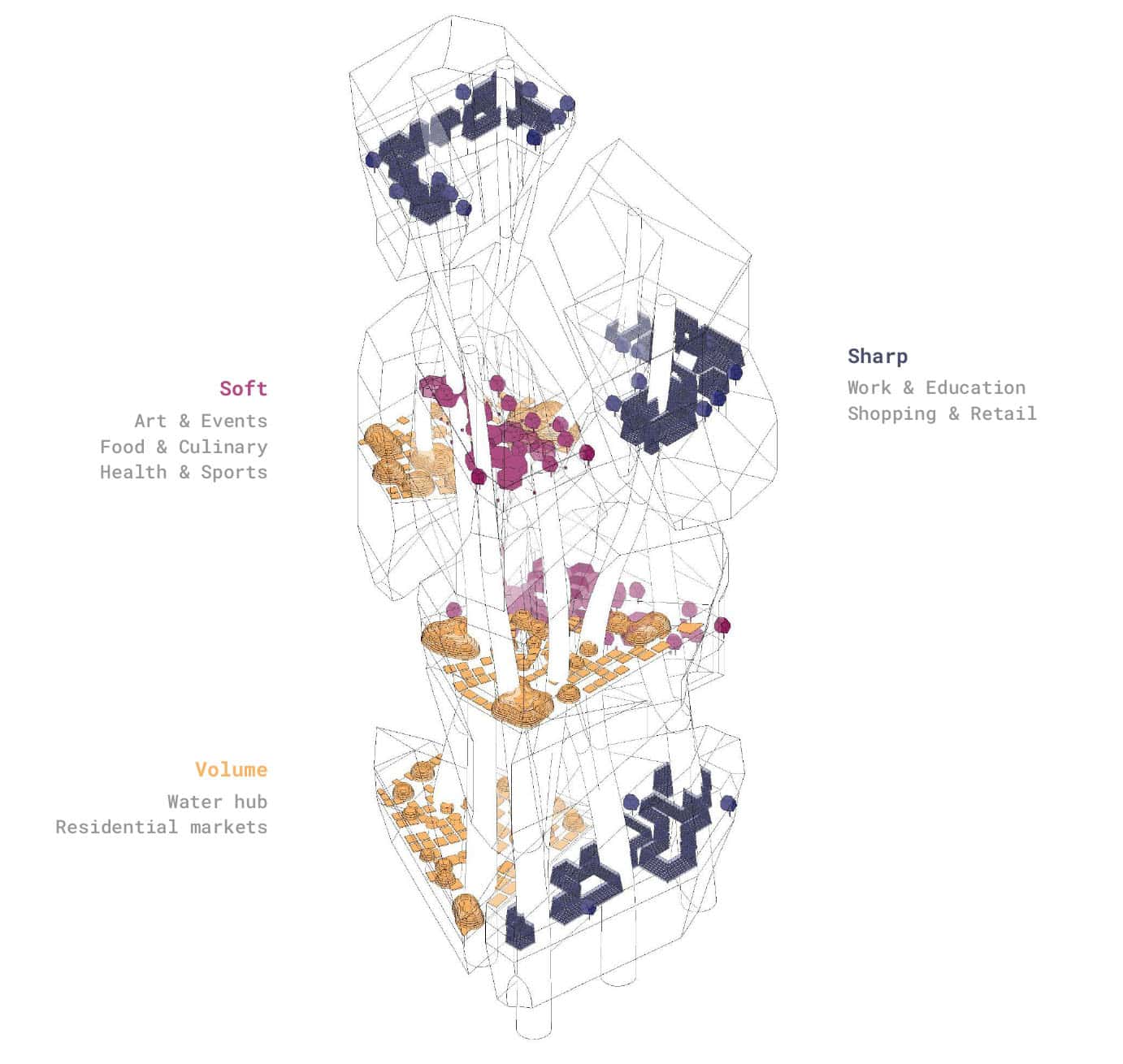_Architecture Inspired by Ensō: Unity Through Cycles
At the heart of The Vertical Machine lies a philosophical foundation. Borrowing from the Zen concept of ensō, the circle that symbolizes the beauty of incompleteness and the continuity of cycles, the project embraces imperfection and transformation. Just as an ensō is drawn in a single fluid stroke, the building is designed as a continuous, responsive system—always adapting, always becoming.
This theme is not a metaphor. It directly shapes how the building works. Systems don’t just coexist, they feed into each other. Energy, food, and waste are interconnected in regenerative loops that prioritize balance over extraction, and symbiosis over segmentation.



_The Building as an Ecosystem
The Vertical Machine views the built environment not as separate from nature, but as a potential partner. Its three foundational systems: energy, food, and waste. Those systems are designed as closed loops and regenerate resources rather than deplete them.
Energy as Flow, Not Supply
Energy in this project is not simply harvested; it is captured, stored, and recirculated. The building is imagined as a living infrastructure that gathers locally available energies—sunlight, wind, thermal gradients—and redistributes them across different functions.
Every architectural element becomes an opportunity: rooftops, facades, mechanical systems, even data centers contribute to the energy ecosystem. Waste heat is not wasted. It becomes a resource used to warm water, drive thermal loops, or support agricultural processes embedded in the structure.
Food as Architecture
Rather than treating food systems as auxiliary programs, The Vertical Machine integrates food directly into its spatial logic. Vertical farming, aquaponics, and urban agriculture are not confined to green rooftops or designated plots, instead they permeate the building.
Crops grow along the building’s skin, aquaponic systems circulate within its core, and every level contributes to food production. This decentralization of agriculture challenges industrial food systems while reducing environmental impact, food miles, and nutritional loss. At the same time, it transforms the building into a place of nourishment and learning, not just habitation or work.
Waste as Beginning, Not End
Where traditional buildings discard, The Vertical Machine reclaims. Waste is no longer an end product, it is a new beginning. Organic matter is composted or transformed into bioenergy. Greywater is captured, purified, and reused. Construction and operational byproducts are recycled and reintegrated into ongoing building cycles.
The goal is not just waste reduction, but waste elimination as a concept. This requires a shift in both mindset and infrastructure: designing not just for efficiency, but for regeneration.





From Node to Neighborhood: A Scalable Framework
Crucially, The Vertical Machine is not a one-off prototype. It proposes a scalable typology that can adapt to different urban contexts. Its systems work across multiple levels:
- At the neighborhood level, clusters of buildings interact as energy-sharing, food-producing, waste-cycling ecosystems, creating a distributed yet interconnected urban fabric.
- At the node level, distinct programmatic areas such as culinary zones, water hubs, and retail sectors are structured into “Soft,” “Volume,” and “Sharp” typologies. These reflect varying degrees of spatial intensity and public interaction.
This adaptability is supported by NodeGen, a generative design tool developed by the team. It uses algorithmic logic and AI-enhanced visualization to iterate design variations for different functions and scales. The result is a system that is not only conceptually holistic, but also technically flexible.





Each neighborhood works in symbiosis with the others, offering energy, food, leisure spaces, or working areas among others. On the other hand, they overproduce on behalf of others but also receive something in return.





A Philosophy in Practice
While The Vertical Machine is grounded in technical rigor, its strength lies in its philosophical consistency. Every component reinforces the central idea: architecture as a regenerative force. It moves beyond sustainability as a checklist and toward a living, evolving practice rooted in ecology, ethics, and imagination.
In doing so, the project challenges architecture to expand its responsibilities and its possibilities. It asks: Can buildings nourish us? Can they restore rather than extract? Can they be teachers, not just shelters?
In the end, The Vertical Machine is not merely a design proposal. It is a provocation, a prototype, and perhaps, a preview of what’s to come.

